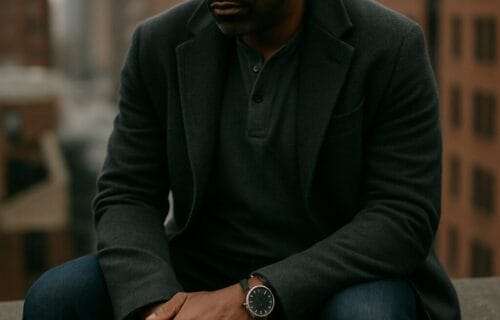
Subtle Childhood Trauma in High-Functioning Adults: Signs You Missed
- Updated: October 23, 2025
“My childhood was fine.
We had a pool. Vacations. I got good grades.
But I always felt… off.
Disconnected. Like I was watching life instead of living it.”
You’ve probably heard someone describe their past like this—maybe even in a podcast, a book, or a viral post. No abuse. No screaming. Just a quiet ache. A subtle fracture. A sense that something essential never quite clicked into place.
They talk about dissociation, but not from war or violence—from numbness.
They say they never felt “integrated,” but can’t name why.
They function, achieve, perform—and yet, under it all…
they’re floating.
This post is for them.
Not for those of us who remember the sirens, the screaming, the gut-level survival mode.
But for the ones who had structure without safety, closeness without clarity, performance without presence.
Because just because there was no blood doesn’t mean there was no bruise.
And those wounds—the ones wrapped in achievement, politeness, or pristine family photos—deserve to be named, too.
Your Path Forward After “Soft” Pain
What Hurts vs. What Heals: Sadness, Harm, and Trauma Aren’t the Same
Let’s be honest:
Not everything that hurts is trauma.
But everything that hurts still matters.

There’s a lot of confusion right now between harm, sadness, and trauma—especially online, where emotional buzzwords get thrown around like seasoning. And while these experiences may look similar on the surface, they leave different imprints. They require different kinds of healing.
Here’s how I break it down:
🧾 What You Felt vs. What It Did to You
| What Happened | The Impact | What It Often Gets Labeled As |
|---|---|---|
| You were disappointed often | You learned to lower expectations | Sadness |
| You were emotionally unseen | You learned to suppress needs | Harm / Neglect |
| You were afraid for safety | You rewired your body to survive, not connect | Trauma |
| You were over-relied on | You learned to overfunction and avoid being a burden | Emotional stunting / enmeshment |
| You were ignored or invalidated repeatedly | You learned your feelings were “too much” | Neglect-lite / covert harm |
🕯️ Some Trauma Screams. Some Trauma Whispers.
Some people have trauma that shouts.
You know it when you hear it—abuse, violence, addiction, abandonment. It leaves no room for doubt.
But some people carry trauma that whispers.
It’s subtle. Sanitized. Socially acceptable. It looks like:
Being the mature one at 7 years old
Getting praised for never crying
Having a “close family” that quietly erased your boundaries
And when your trauma whispers, it’s easy to question whether it even counts.
“I mean, I wasn’t abused… I just had to have it all together.”
“My parents weren’t bad… they just couldn’t meet me emotionally.”
So if your past didn’t feel like chaos, but you still walk around with a sense of numbness, disconnection, or perfectionism-shaped grief—
you’re not imagining it.
You’re carrying something real.
You don’t have to perform trauma for it to count.
But you do have to stop minimizing what it did to you.

Understanding Subtle Trauma: What It Is—and Isn’t
Not all trauma is explosive.
Not all trauma is visible.
And not all trauma announces itself as trauma.
There’s a category of emotional wounding that doesn’t fit the usual mold—no screaming, no abuse, no CPS case. It doesn’t look like trauma, but it functions like it. It alters development, distorts identity, and makes adulthood feel like a tight mask.
Psychiatrists like Dr. Bessel van der Kolk, Dr. Bruce Perry, and Dr. Dan Siegel have spent decades mapping how even mild but chronic emotional ruptures—what Perry calls “developmental adversity”—can change a child’s sense of self and safety.
But here’s the catch: these changes often fly under the radar when a child is “well-behaved,” high-achieving, or quiet.
This is the realm of what I call subtle trauma—the stuff that doesn’t explode, but corrodes over time.

🧠 How Subtle Trauma Works
Subtle trauma is often a combination of:
Emotional stunting (rewarded for not feeling)
Neglect-lite (invisible or minimized needs)
Suburban enmeshment (oversharing disguised as closeness)
Patterned invalidation (you were loved, but never really seen)
Unlike acute trauma (which screams), this trauma whispers.
It says:
“Don’t need too much.”
“Don’t make waves.”
“Don’t be a problem.”
And you obeyed. You got good at being “fine.”
At holding space for others. At functioning.
But inside, you might feel:
Unclear about your real wants
Disconnected from your body
Emotionally flat or chronically overthinking
Like you’re always performing, even with people you love
That silent training is often the root of why softness feels unsafe in adulthood—and why so many high-functioning adults equate softness with danger. I break this down more deeply in Why You Stopped Trusting Softness.
🧭 Not All Trauma Looks Like Drama
If you’re reading this thinking, “But I didn’t have it that bad,” pause right there.
I’ve said this before, and it still holds:
👉 “Control didn’t start as a character flaw. It started as a survival strategy.”
(How Childhood Trauma Fuels Controlling Behavior)
👉 “You don’t fall for people by logic. You fall by familiarity.”
(How Childhood Trauma Shapes Your Love Life)
Subtle trauma doesn’t demand to be recognized.
It hides in high performers, straight-A students, loyal helpers, and chronic fixers.
And if no one ever named it for you—
you might still be carrying it.
🧭 Up next:
Let’s name the five most common signs you grew up emotionally underfed—so you can stop wondering if you’re just “overthinking” and start recognizing the truth.
5 Ways Emotional Underfeeding Shows Up in Adulthood
You might not call it trauma.
But you feel the cracks.
You find it hard to name your needs. You overfunction. You stay in relationships too long—or never let anyone in at all. You feel like you’re too much and not enough, all at once.
Sound familiar?
You might be living with the effects of emotional undernourishment—the kind of subtle trauma that never got named but still shaped how you move through the world.
Here are five common signs.

1. “I Wasn’t Abused. I Just Had to Be the Mature One.”
You were praised for being easy. Low-maintenance. Wise beyond your years.
But you weren’t mature—you were over-adapting. You figured out early that having needs made life harder, not safer. So you learned to disappear emotionally while showing up physically.
🔁 Turns into: chronic self-sufficiency, shame about asking for help, emotional detachment in adulthood.
2. Suburban Enmeshment: “We Were Close… Too Close.”
You weren’t hit. You were used. You became the confidante, the fixer, the sounding board for a parent who should have been emotionally resourcing you.
It might’ve looked like love, but it felt like pressure.
🔁 Turns into: blurred boundaries, people-pleasing, guilt when you take space, fear of disappointing others.
3. Neglect-Lite: “My Parents Were Good People… They Just Didn’t See Me.”
They fed you. They showed up. But they couldn’t sit with your sadness. They shut down when things got real. Or they gently brushed you aside—so gently, you didn’t realize it was a dismissal.
🔁 Turns into: hyper-independence, not knowing what you feel, spiritual bypassing or emotional numbness masked as “calm.”
4. Emotional Stunting: “She’s So Mature!”
You became what your environment needed. And what it needed was someone who didn’t cry, didn’t question, didn’t complicate things. So you learned to suppress curiosity, creativity, chaos—anything that wasn’t tidy.
🔁 Turns into: leadership without intimacy, high performance with low joy, burnout that feels moral.
5. The “Clean” Trauma Bind: “I Feel Broken—But I Don’t Know Why.”
You scroll trauma content and relate… but second-guess it. You use healing language like “inner child” and “boundaries,” but secretly wonder if you’re just being dramatic.
It’s not dramatic.
It’s what happens when you were fed, clothed, and deeply unseen.
🔁 Turns into: emotional self-doubt, healing-as-performance, shame for not being “grateful enough.”
If you were not just emotionally underfed but also emotionally used — especially as the emotional anchor for a parent — you may be living with mother-son enmeshment, a form of covert trauma that shapes your identity in adulthood.
👉 Read this post next.
Coming up next:
We’re going to talk about what happens when people try to lead healing work without ever touching their real grief—and how you can recognize the difference between safe healing and the performance of healed™.
The Illusion of Healed™: When Trauma Becomes Aesthetic
Let’s name something gently but clearly:
Not everyone in the healing space is speaking from the deep end of the pool.
Some are performing healing without having done the work.
Some are repackaging coping strategies as transformation.
And some are using the language of trauma—but it doesn’t seem to match the life they’ve lived.
You can feel it. The soft voice. The curated neutrality. The carefully chosen lighting and emotional tone that always stays… controlled.
It’s not that they’re lying.
It’s that they’re speaking from the shallow end—and presenting it as depth.

🧠 The Healing-Adjacent Archetype
You’ve seen this type before—on Instagram, podcasts, maybe even bestselling books:
Childhood stories with no visible rupture—just “emotional immaturity” or “not feeling safe to be myself”
Claims of dissociation that feel more like introversion or burnout
Constant references to nervous system regulation—but no actual stories of spiritual collapse, grief, or rupture
Aesthetics that signal softness, but content that never gets messy
There’s nothing wrong with those experiences.
What’s wrong is when people present them as universal trauma wisdom.
And worse—sell tools, courses, or coaching off a foundation they haven’t actually walked through.
If you found yourself shapeshifting emotionally or question if you are introverted or extroverted …
👉 Read this post next.
🧯 Here’s What Real Trauma Work Usually Looks Like:
Awkwardness (not vibes)
Grief (not just gratitude)
Somatic messiness—rage, confusion, bargaining, silence, numbness, tenderness, clarity… all in a single week
Stories that don’t make you look good—but make you whole
That doesn’t mean everyone has to share their pain publicly.
But if someone is teaching healing, you should be able to feel that their voice has been cracked open by truth—not just trained in buzzwords.
😵💫 If You’ve Felt Confused or Invisible in the Healing Space—You’re Not Alone
You’re not imagining the disconnect.
If you’ve walked through deep rupture—incest, rape, addiction, betrayal, chronic dissociation—you may find that certain trauma content feels… hollow. Flat. A little too clean.
You might wonder:
“Am I too damaged?”
“Am I missing something everyone else seems to get?”
“Why doesn’t this soft, regulated energy feel like safety to me?”
It’s because some of what you’re seeing is the performance of healed™—not the process of healing.
And your body knows the difference.
If you’ve ever sat with someone who’s truly grieved… you know:
Healing doesn’t always glow. Sometimes it burns.
Next up:
Let’s talk about what real healing looks like—especially for those who were never given the language, the safety, or the mirror to name what they’ve lived through.
What Real Healing Looks Like for the Quietly Wounded
Let’s be clear:
You don’t have to perform trauma to justify healing.
But you do have to stop minimizing what shaped you.
If you grew up emotionally underfed, subtly erased, or quietly overburdened, here’s what healing will probably look like—not the Instagram version, but the real one:

💔 1. You grieve what you never named.
Not with hashtags. Not with memes. But with real, slow ache.
You let yourself feel sorrow for the childhood you performed instead of lived.
“I was loved, but not understood.”
“I was praised, but never seen.”
“I adapted, but never felt safe.”
That grief is holy. Don’t skip it.
💬 2. You stop explaining yourself to people who don’t get it.
Healing doesn’t require consensus. You don’t need your parents, siblings, pastor, or podcast host to validate what you lived through.
You need you.
🧠 3. You relearn how to name your needs.
This might be the hardest one. Especially if you were trained to disappear.
You’ll feel selfish at first.
Then you’ll feel awkward.
And eventually—you’ll feel free.
🪞 4. You stop trying to earn worth through performance.
This is where it gets spiritual.
You release the version of yourself who achieved to survive.
And you start building a self who gets to just be.
Not useful.
Not perfect.
Just real.
🧭 5. You unhook from healing culture and return to healing itself.
You stop collecting tools and start building truth.
You don’t just say “nervous system regulation”—you let your nervous system rest.
You don’t just repost quotes—you ask yourself if you’re living them.
You leave behind the idea of “arriving” and start practicing presence.
And above all else, please know this: You weren’t broken. You were just undernourished.
Healing isn’t about fixing—it’s about returning to emotional wholeness.
Want to see what real healing actually looks like—especially after years of subtle emotional hunger?
👉 Read: Where Real Healing Happens.
Final Thoughts: You Didn’t Have to Be Abused to Deserve Healing
If you’ve made it this far, here’s what I want you to know:
You don’t need a horror story to heal.
You don’t need proof.
You don’t need to keep wondering if it “counts.”
It counts.
Emotional hunger is still hunger.
Loneliness in a full house still wounds.
Being good instead of being known still leaves scars.
You adapted in ways that made you strong.
But now—maybe—it’s time to stop adapting and start repairing.
No more shrinking your story to make others comfortable.
No more gaslighting yourself just because your pain was quiet.
You weren’t held the way you needed to be.
That’s not your fault. But it is your work to heal.
And it’s work you don’t have to do alone.
💛 If you’re ready to stop performing and start healing—for real—I’d be honored to support you.
💛 Work with me, Denise G. Lee – Together, we’ll untangle the deeper patterns holding you back and create clear, practical strategies that match you. No hype. No formulas. Just honest, personalized support.
👉 Explore working together
🎙️ Want more real talk like this?
Listen to my podcast for unfiltered conversations on emotional growth, leadership, and the truth about healing in business and life.
👉 Introverted Entrepreneur – wherever you stream
💌 Got thoughts or questions about this article?
I’d love to hear from you.
👉 Write me a note
And just in case no one’s reminded you lately:
Leadership isn’t about being perfect.
It’s about being present. Being willing.
Showing up with your scars, not just your strengths.
That’s what makes it powerful.
That’s what makes it real.





